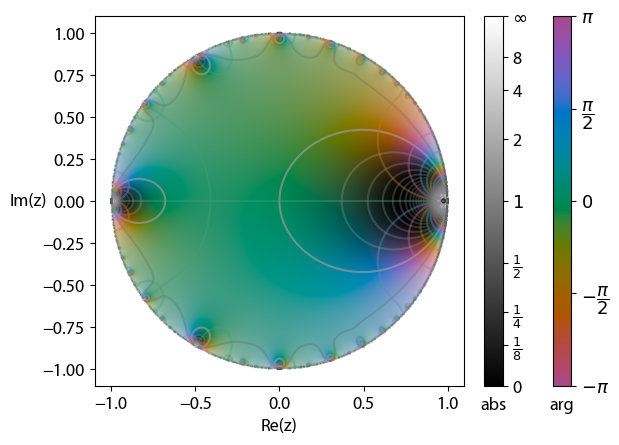 In mathematics, the Euler function is given by
:
Named after
In mathematics, the Euler function is given by
:
Named after Leonhard Euler
Leonhard Euler ( , ; 15 April 170718 September 1783) was a Swiss mathematician, physicist, astronomer, geographer, logician and engineer who founded the studies of graph theory and topology and made pioneering and influential discoveries in ma ...
, it is a model example of a ''q''-series and provides the prototypical example of a relation between combinatorics
Combinatorics is an area of mathematics primarily concerned with counting, both as a means and an end in obtaining results, and certain properties of finite structures. It is closely related to many other areas of mathematics and has many a ...
and complex analysis
Complex analysis, traditionally known as the theory of functions of a complex variable, is the branch of mathematical analysis that investigates functions of complex numbers. It is helpful in many branches of mathematics, including algebra ...
.
Properties
Thecoefficient
In mathematics, a coefficient is a multiplicative factor in some term of a polynomial, a series, or an expression; it is usually a number, but may be any expression (including variables such as , and ). When the coefficients are themselves ...
in the formal power series
In mathematics, a formal series is an infinite sum that is considered independently from any notion of convergence, and can be manipulated with the usual algebraic operations on series (addition, subtraction, multiplication, division, partial s ...
expansion for gives the number of partitions of ''k''. That is,
:
where is the partition function.
The Euler identity, also known as the Pentagonal number theorem
In mathematics, the pentagonal number theorem, originally due to Euler, relates the product and series representations of the Euler function. It states that
:\prod_^\left(1-x^\right)=\sum_^\left(-1\right)^x^=1+\sum_^\infty(-1)^k\left(x^+x^\righ ...
, is
:
is a pentagonal number
A pentagonal number is a figurate number that extends the concept of triangular and square numbers to the pentagon, but, unlike the first two, the patterns involved in the construction of pentagonal numbers are not rotationally symmetrical. Th ...
.
The Euler function is related to the Dedekind eta function
In mathematics, the Dedekind eta function, named after Richard Dedekind, is a modular form of weight 1/2 and is a function defined on the upper half-plane of complex numbers, where the imaginary part is positive. It also occurs in bosonic string ...
as
:
The Euler function may be expressed as a ''q''-Pochhammer symbol:
:
The logarithm
In mathematics, the logarithm is the inverse function to exponentiation. That means the logarithm of a number to the base is the exponent to which must be raised, to produce . For example, since , the ''logarithm base'' 10 of ...
of the Euler function is the sum of the logarithms in the product expression, each of which may be expanded about ''q'' = 0, yielding
:
which is a Lambert series
In mathematics, a Lambert series, named for Johann Heinrich Lambert, is a series taking the form
:S(q)=\sum_^\infty a_n \frac .
It can be resumed formally by expanding the denominator:
:S(q)=\sum_^\infty a_n \sum_^\infty q^ = \sum_^\infty ...
with coefficients -1/''n''. The logarithm of the Euler function may therefore be expressed as
:
where - /1, 3/2, 4/3, 7/4, 6/5, 12/6, 8/7, 15/8, 13/9, 18/10, ...(see OEIS
The On-Line Encyclopedia of Integer Sequences (OEIS) is an online database of integer sequences. It was created and maintained by Neil Sloane while researching at AT&T Labs. He transferred the intellectual property and hosting of the OEIS to th ...
br>A000203On account of the identity this may also be written as : Also if and , then :
Special values
The next identities come from Ramanujan's Notebooks: : : : : Using thePentagonal number theorem
In mathematics, the pentagonal number theorem, originally due to Euler, relates the product and series representations of the Euler function. It states that
:\prod_^\left(1-x^\right)=\sum_^\left(-1\right)^x^=1+\sum_^\infty(-1)^k\left(x^+x^\righ ...
, exchanging sum and integral
In mathematics, an integral assigns numbers to functions in a way that describes displacement, area, volume, and other concepts that arise by combining infinitesimal data. The process of finding integrals is called integration. Along with ...
, and then invoking complex-analytic methods, one derives
:
References
Notes
Other
* {{Leonhard Euler Number theory Q-analogs Leonhard Euler km:អនុគមន៍អឺលែរ